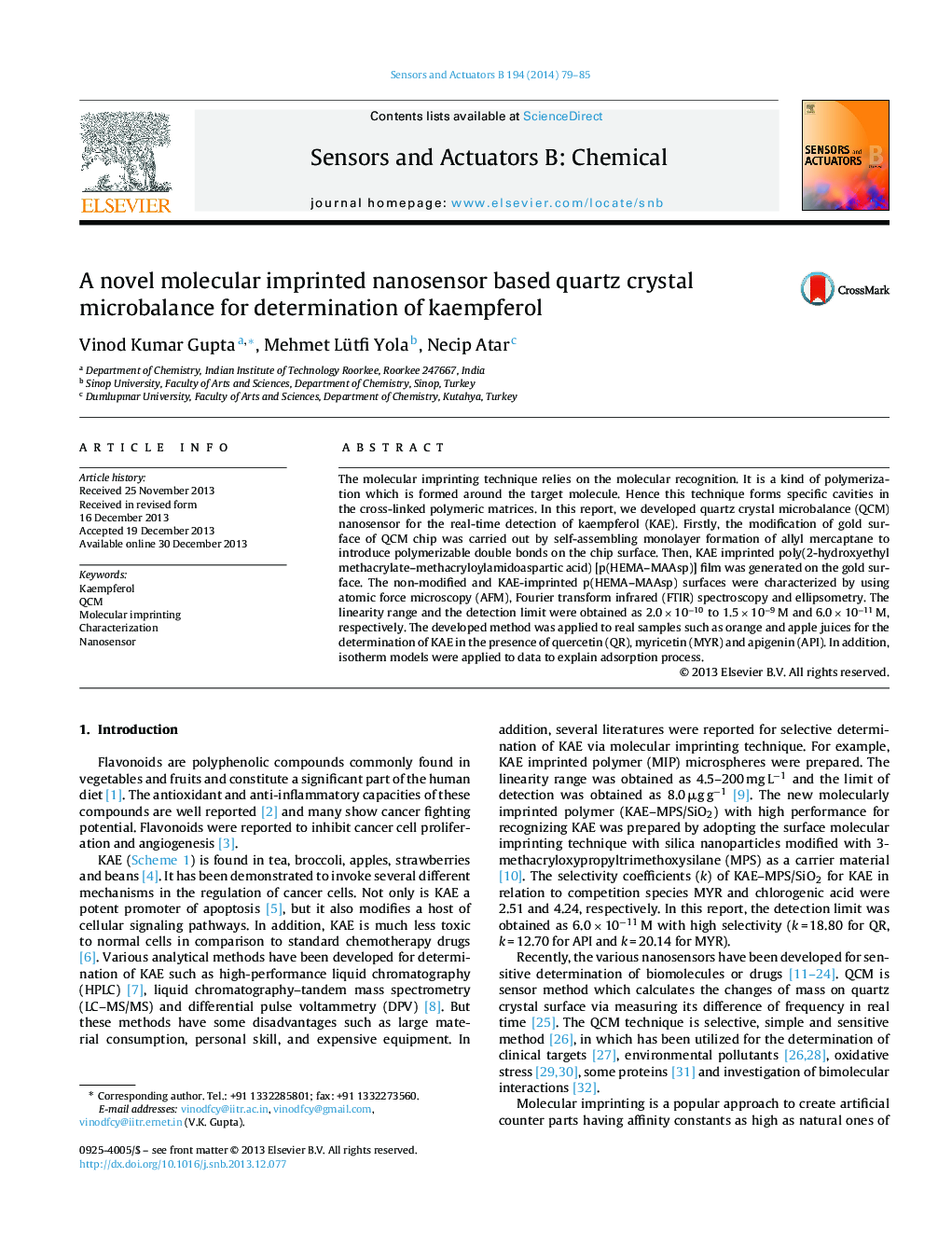| Article ID | Journal | Published Year | Pages | File Type |
|---|---|---|---|---|
| 742857 | Sensors and Actuators B: Chemical | 2014 | 7 Pages |
•We developed quartz crystal microbalance nanosensor for detection of kaempferol.•The non-modified and KAE-imprinted surfaces were characterized by various techniques.•The proposed method was validated according to the ICH guideline.•The isotherm models were applied to data to explain adsorption process occurred.
The molecular imprinting technique relies on the molecular recognition. It is a kind of polymerization which is formed around the target molecule. Hence this technique forms specific cavities in the cross-linked polymeric matrices. In this report, we developed quartz crystal microbalance (QCM) nanosensor for the real-time detection of kaempferol (KAE). Firstly, the modification of gold surface of QCM chip was carried out by self-assembling monolayer formation of allyl mercaptane to introduce polymerizable double bonds on the chip surface. Then, KAE imprinted poly(2-hydroxyethyl methacrylate–methacryloylamidoaspartic acid) [p(HEMA–MAAsp)] film was generated on the gold surface. The non-modified and KAE-imprinted p(HEMA–MAAsp) surfaces were characterized by using atomic force microscopy (AFM), Fourier transform infrared (FTIR) spectroscopy and ellipsometry. The linearity range and the detection limit were obtained as 2.0 × 10−10 to 1.5 × 10−9 M and 6.0 × 10−11 M, respectively. The developed method was applied to real samples such as orange and apple juices for the determination of KAE in the presence of quercetin (QR), myricetin (MYR) and apigenin (API). In addition, isotherm models were applied to data to explain adsorption process.
Graphical abstractFigure optionsDownload full-size imageDownload as PowerPoint slide
